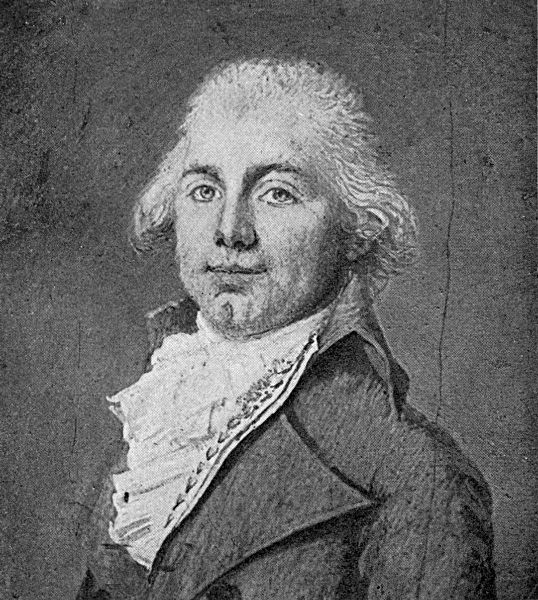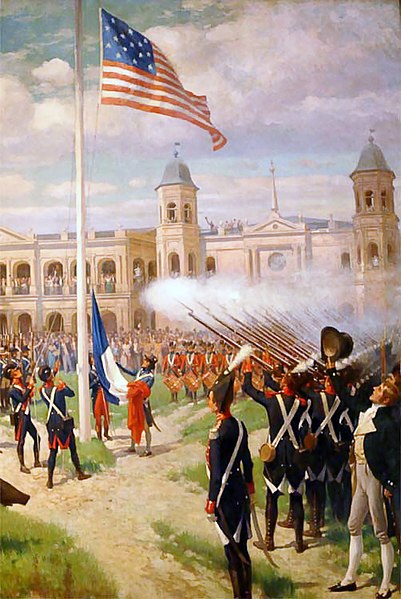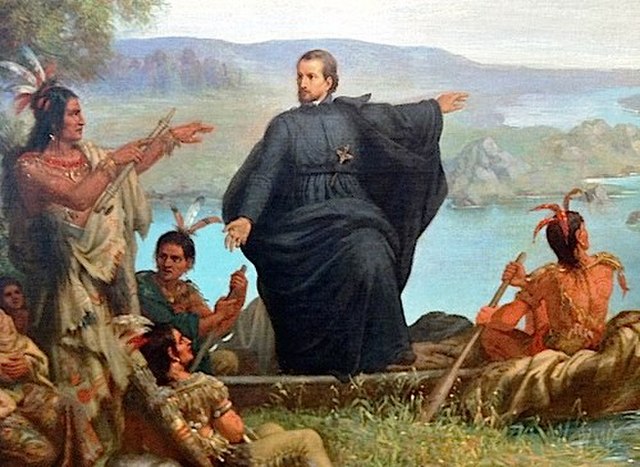The Louisiana Purchase was the acquisition of the territory of Louisiana by the United States from the French First Republic in 1803. This consisted of most of the land in the Mississippi River's drainage basin west of the river. In return for fifteen million dollars, or approximately eighteen dollars per square mile, the United States nominally acquired a total of 828,000 sq mi in Middle America. However, France only controlled a small fraction of this area, most of which was inhabited by Native Americans; effectively, for the majority of the area, the United States bought the preemptive right to obtain Indian lands by treaty or by conquest, to the exclusion of other colonial powers.
The future president James Monroe as envoy extraordinary and minister plenipotentiary to France helped Robert R. Livingston in negotiating the Louisiana Purchase
The original treaty of the Louisiana Purchase
Transfer of Louisiana by Ford P. Kaiser for the Louisiana Purchase Exposition (1904)
Flag raising in the Place d'Armes of New Orleans, marking the transfer of sovereignty over French Louisiana to the United States, December 20, 1803, as depicted by Thure de Thulstrup
Louisiana or French Louisiana was an administrative district of New France. In 1682 the French explorer René-Robert Cavelier, Sieur de la Salle erected a cross near the mouth of the Mississippi River and claimed the whole of the drainage basin of the Mississippi River in the name of King Louis XIV, naming it "Louisiana". This land area stretched from the Great Lakes to the Gulf of Mexico and from the Appalachian Mountains to the Rocky Mountains. The area was under French control from 1682 to 1762 and in part from 1801 (nominally) to 1803.
The Mississippi River basin and tributaries
Jacques Marquette
Claiming Louisiana for France in 1682
Jean-Baptiste Colbert








